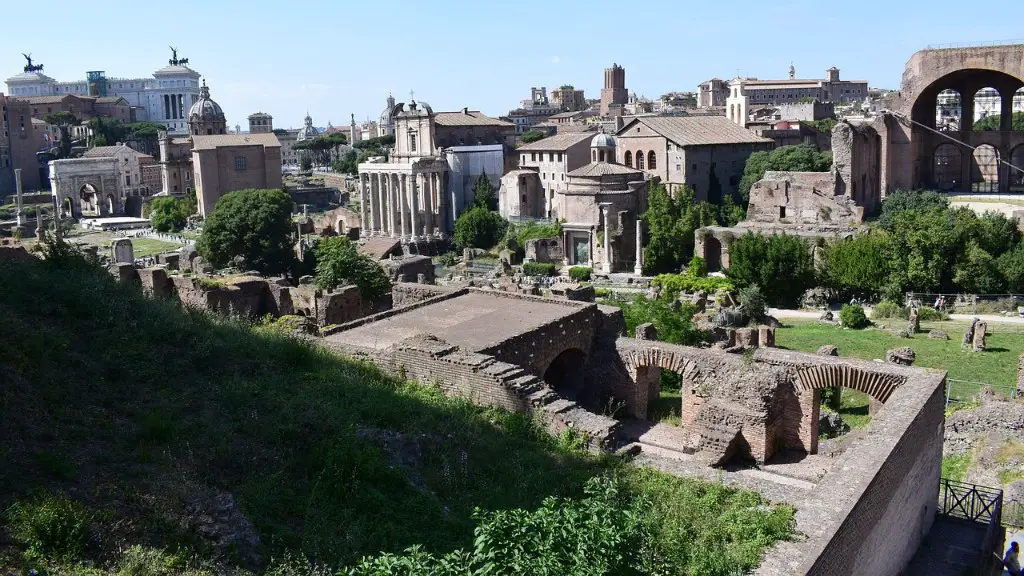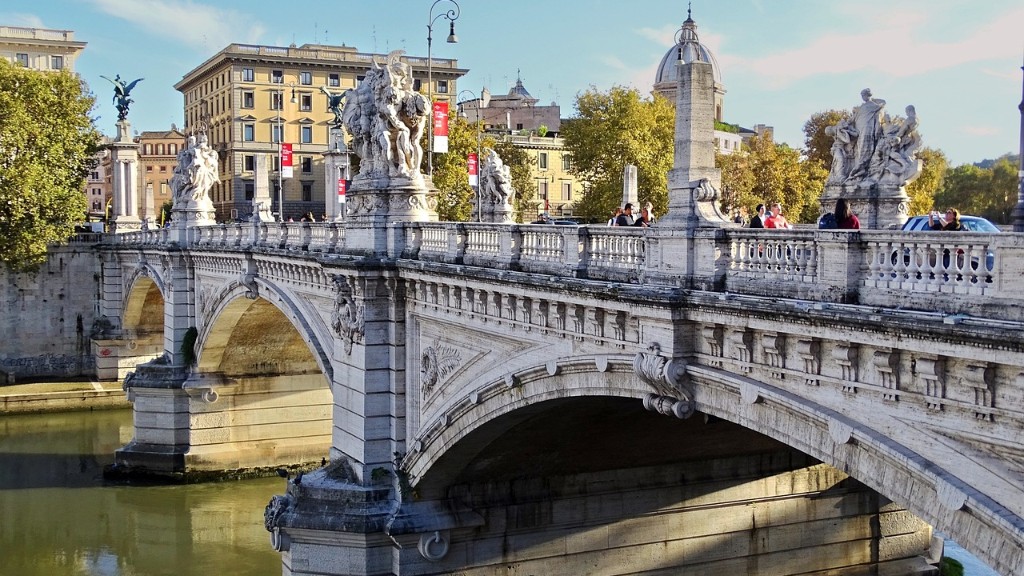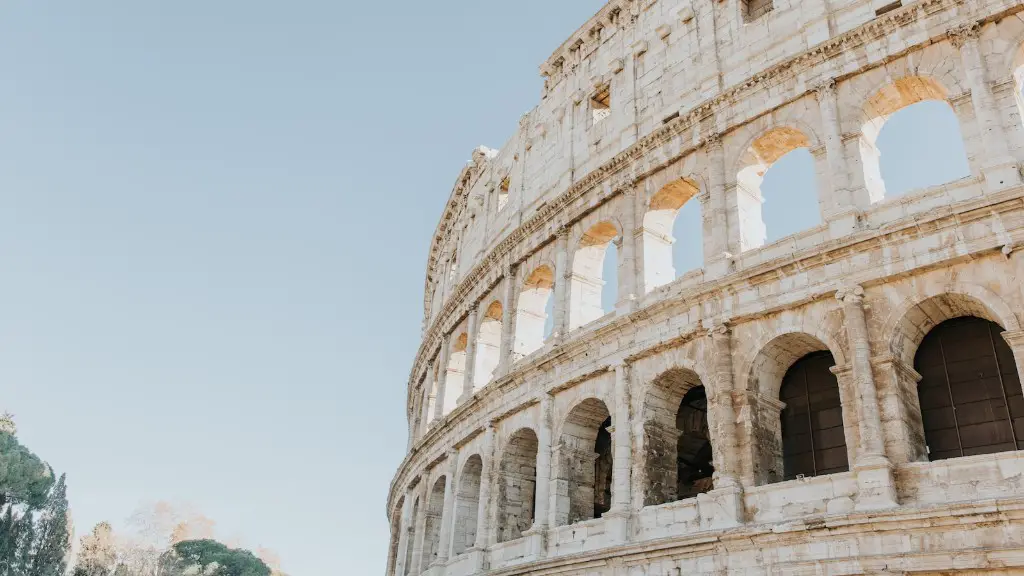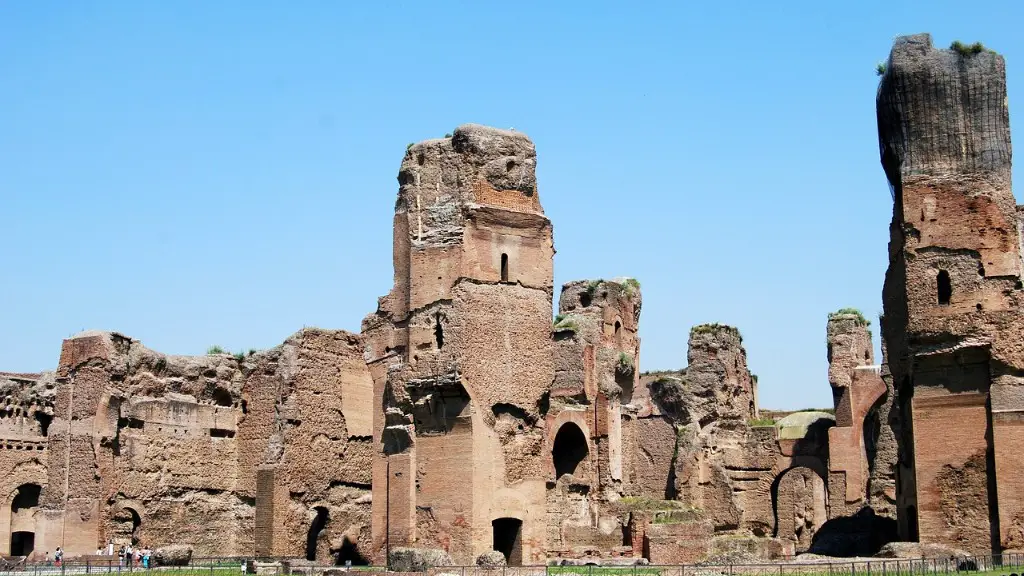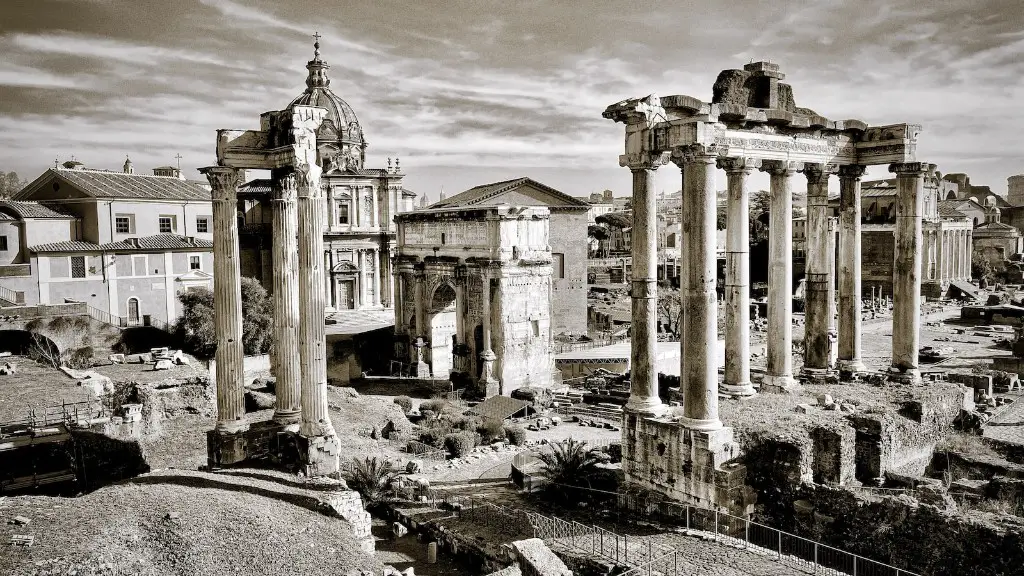From gods and goddesses, to gladiatorial bloody fights, and lavishly decorated palaces – Ancient Rome was a centre of power and religion. It was a highly advanced society and its achievements have influenced our world today in numerous ways. One of the first questions to ask: what was the center of life in Ancient Rome?
In its infancy, the Roman Empire was largely rural, meaning much of its population worked on the land. Even during its heyday, the majority of people lived in the countryside. But the city of Rome was the political centre of the empire, it was where the emperor and Senate met, passed laws, and where renowned public buildings were erected.
The Roman Forum was the epicenter around which the Ancient Roman life revolved. This is the flat expanse of land which used to lie between the Palatine and Capitoline hills. It served many purposes, offering a public space for use by families, a meeting place for government, courts of law, an open market for buying and selling and a temple dedicated to the gods.
The Forum was a great gathering place where you could debate politics, religion, food, and culture. It was also where family celebrations, funerals, and marriages were held. It was here that chariot races were held and most famously where the gladiators would fight.
Apart from the Forum, the Colosseum formed the heart of the city. It was the biggest amphitheater ever built and remains a symbol of Rome. The Colosseum was used for special events such as theatrical performances, religious festivals, and battles between gladiators.
The Baths of Caracalla is another place worth mentioning. In Ancient Rome, the baths were social centers, some were even housed in grand buildings such as the Baths of Caracalla. It was a place where people could go to take a social bath, exercise, admire art, or simply pass the time.
So, it’s clear that Ancient Rome had a rich social life, which revolved around the Forum. The Forum, the Colosseum, and the other public buildings provided a place to meet, debate and socialise.
Living Conditions
Living conditions in Ancient Rome could vary greatly depending on your social class. The upper classes had large homes made of marble and decorated with luxurious furniture and costly artwork. They had spacious gardens and wore expensive clothing. On the other hand, the lower classes lived in small, cramped apartments with little furniture. The lower classes had to work long hours to survive and the death rate among children was high.
Ancient Rome was home to a mix of cultures, religions and social classes. While wealthy patricians and tribunes occupied homes in the centre of town, the poorer classes crowded in overcrowded neighborhoods and tenement buildings on the outskirts.
Social life varied between classes as well. The wealthy would enjoy billiards and dinner parties in grand villas and gardens, while the poorer classes could congregate in the Forum or public baths for entertainment and gossip.
The wealthy also enjoyed horse racing, sea bathing and boating parties, which were all very popular pastimes. The poorer classes were still able to enjoy the monuments, public festivals, theatre and chariot races of the Colosseum.
Interestingly, the wealthy classes were much more likely to engage in courtly love and extramarital affairs than the lower classes. This was due to the fact that it was more socially acceptable in the upper classes, who had the resources to get away with it.
Economics
Since the founding of Rome in 753 BC, the ancient economy had grown significantly, with a focus on agriculture, livestock and fishing. This economy dominated during the monarchy before shifting to a more prosperous one during the Republic.
By the time of the 1st century BC, Rome had become the most powerful state in the whole Mediterranean basin. Its economy revolved around the exploitation of its imperial possessions and access to goods, particularly those of the East. Customs tariffs, income tax, and state-run monopolies were all means of income for the state and its citizens.
Trade and commerce also flourished during this period with merchants trading goods from as far away as India and China. The growth of the economy created new business opportunities, increased foreign trade and stimulated independence.
The majority of citizens were self-employed and relied on their own resources to make a living. Merchants and tradespeople could be found in markets and workshops, and there was also a thriving community of craftsmen and artisans.
The economy was further helped by advances in technology, such as the introduction of coins and metal coins. Coins were widely used for currency during the Roman Empire although bartering was still common.
Culture and Religion
Culture and religion permeated all aspects of life in Ancient Rome. Religion was a major force in daily life with the gods and goddesses held in high esteem. There was a god or goddess for almost every aspect of life and they each had their own specific cults dedicated to them.
Asclepius, the god of healing, was an important figure and you could even find temples dedicated to him. Religion was also fundamental to social rituals with funerals, weddings, and feasts all based around religious ceremonies.
Theatre was also a key part of Roman culture. The Romans loved the theatre and it was a popular form of entertainment. Plays were often based upon Greek mythology or Roman history and were accompanied by elaborate costumes and props.
In terms of literature, Romans were highly educated and books were widely available. Epic poetry, satire, and satire were popular with writers such as Virgil, Horace, and Ovid all producing classic works.
Philosophy was also popular with Epicureanism, Stoicism, and Skepticism all practiced in Ancient Rome.
Architecture
Ancient Rome was famous for its spectacular architecture. The most famous example being the Colosseum, a huge amphitheater commissioned by Emperor Vespasian in 70 AD. This impressive building was capable of seating 50,000 people and was used for a variety of events including gladiator fights, wild animal shows, and religious ceremonies.
The Pantheon, the Temple of Vesta and the Circus Maximus are just three of the many monuments which dominate the city of Rome. These monuments are all examples of the Romans mastery of architectural techniques and their ability to manipulate materials like concrete and marble to create elaborate structures.
Another impressive example of Roman architecture is the aqueduct. These artificial channels were used to transport water from the mountains to the cities and towns scattered across the empire. This allowed the Romans to use the water for public baths, fountains, and irrigation of crops.
Rome also boasted some impressive bridges which were constructed to span large rivers. The Pons Fabricius, which still stands today, is a good example of the Roman’s engineering capabilities.
Politics
Ancient Rome was a republic and was ruled by a Senate which was composed of elected representatives from the plebeian and patrician classes. The Senate had the power to make laws and pass legislation.
The Roman Republic lasted until Julius Caesar seized control of Rome in 49BC and established himself as the ruler. After Julius Caesar’s death, his adopted son, Octavian, took control of Rome and was declared the first emperor.
Emperor Octavian passed various reforms aimed at curbing the power of the nobles and increasing the power of the emperor. He established a system of government which revolved around himself as the supreme ruler with a small circle of advisors and representatives who could speak on his behalf.
Over time, the Senate became largely powerless as all decisions were made by the emperor. This gave the emperor complete control over the state and allowed him to appoint governors to rule the provinces, gather taxes, and levy troops for wars.
Conclusion
Ancient Rome was a vibrant, bustling city and the center of life was clearly the Forum – a meeting point for politics and religion. The Colosseum, Baths of Caracalla and other public buildings formed the social landscape of the city and provided entertainment and leisure activities for all classes.
Living and economic conditions varied greatly depending on social class. The economy was based on trade, commerce, and imperial resources while culture and religion dominated the daily life of all citizens. Finally, impressive monuments and bridges, as well as sophisticated buildings, showed just how advanced the Ancient Roman civilization truly was.
